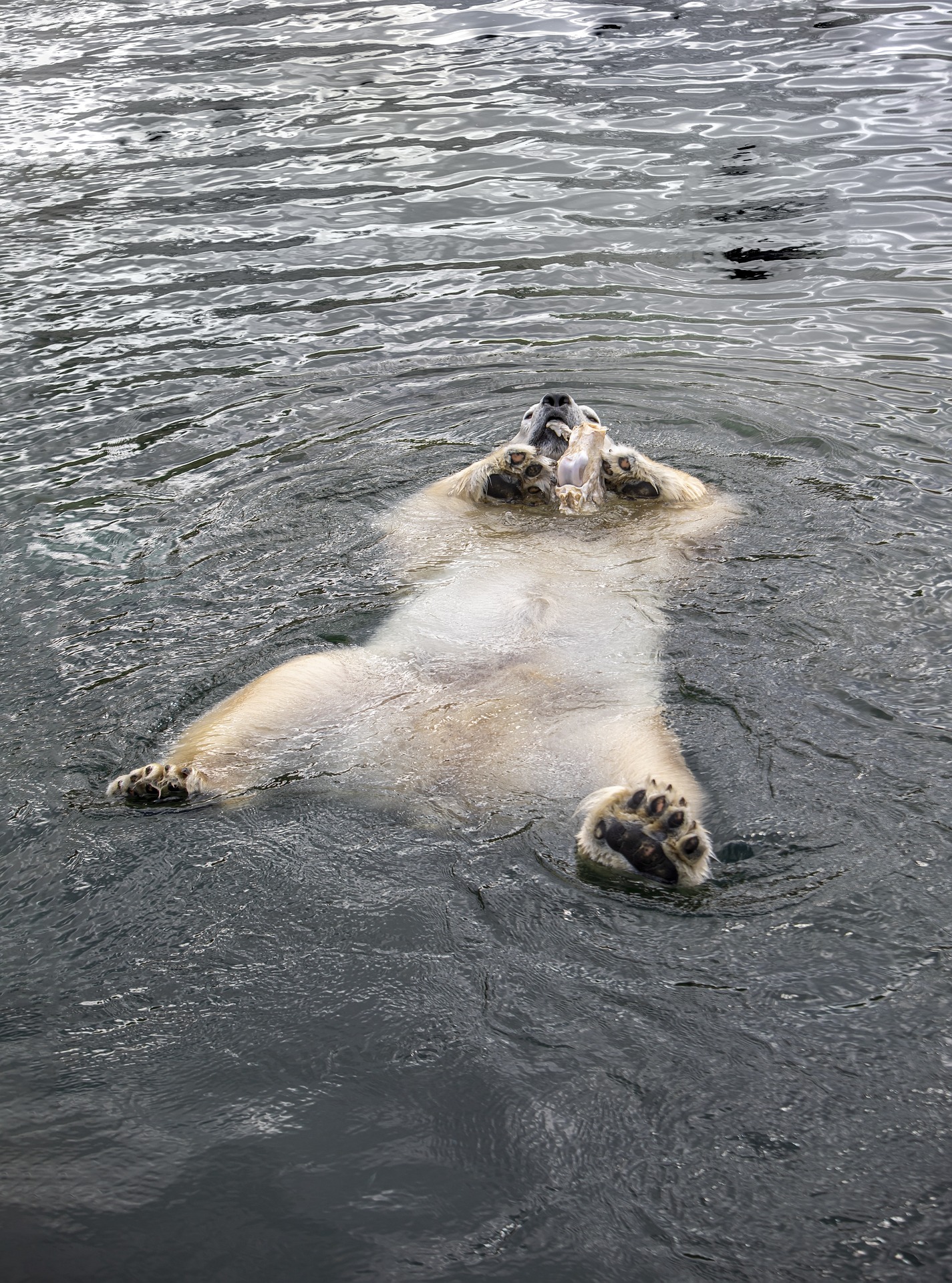The Polar Bear (Ursus maritimus) is the largest land carnivore on Earth and is uniquely adapted to its Arctic habitat. Here’s a short description:
The Polar Bear is a magnificent apex predator native to the Arctic region, with a thick layer of insulating blubber and dense fur enabling it to thrive in the extreme cold. Its iconic white coat, composed of hollow, translucent hairs, provides excellent camouflage against the snowy landscape.
With powerful limbs and large, slightly webbed paws, Polar Bears are exceptional swimmers, traversing vast distances across sea ice in search of prey such as seals, their primary food source. They are also highly skilled hunters, employing patience and stealth to ambush seals at breathing holes or on ice floes.
Polar Bears are solitary animals, except during mating season or when females are raising cubs. Females give birth to one to three cubs in snow dens, nurturing them until they are old enough to venture out into the harsh Arctic environment.
As apex predators, Polar Bears play a crucial role in maintaining the ecological balance of their Arctic habitat. However, they face significant threats due to climate change, which is causing the rapid loss of sea ice and diminishing their access to prey.
Efforts to conserve Polar Bears and their fragile habitat are essential for ensuring the survival of this iconic species in the face of ongoing environmental challenges.
Views: 311
Subscribe to the newsletter:
